Search Results
Fine Jewelry University Articles matching: “Natural world”
Showing only FJU Article results. Click here to show all results.
Fine Jewelry University (Show All FJU Articles)
-

How to Tell If a Diamond Is Natural or Lab Grown
…synthetic diamonds before continuing with this article. So, now you know that lab grown diamonds are just as real as natural diamonds, but we still want to be able to tell them apart. When it comes to diamond simulants like Cubic Zirconia (… they aren’t diamonds. But, with lab grown diamonds, the chemical structure and properties are all the same as natural diamond, so it becomes much more difficult to differentiate them. Responsible Disclosure The first thing to realize is …
-
Synthetic Gems: The Whole Story
… gemologist to detect. But if you had gem material that is the same chemically, optically and crystal structure as a natural gem, it would be very hard to tell them apart. In gemology we call this a synthetic gem. Synthetic gems are not bad…a man made synthetic ruby has the same exact chemical formula and crystal structure and optical characteristics as a natural ruby. How can a person tell them apart? I will tell you it is very very hard. It takes a lot of training, very good …
-
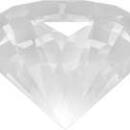
Fake Diamonds: The Great Diamond Attack
… lookalikes. “What is a real diamond?” is a difficult question these days. And the problem of separating a fully natural diamond from all the modern possibilities is quite demanding. So what is a real diamond? Let’s start with the older … but is man made. So, a synthetic diamond is the same chemistry (carbon element) and crystal structure (cubic) as natural diamond but made in a factory. Yes, they can make synthetic diamonds and have for many years now. Most are used in the …
-
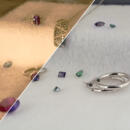
Gem in the Spotlight: Alexandrite
… of 8.5. Because of its high hardness, alexandrite is suitable for everyday wear. That being said, because of natural alexandrite’s tremendous value and rarity, it is recommended to be worn carefully or put in jewelry such as earrings or …is so famous, in fact, that color-change itself is often called “The Alexandrite Effect.” Stunning color change on a natural alexandrite. Alexandrite History and Lore Alexandrite was first found in the Ural Mountains in Russia in the 1830s. …
-
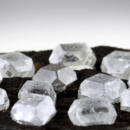
Is a Lab Grown Diamond Right for Me?
… of misinformation and paranoia both from inside the trade and from outside observers. I have heard people say that natural diamonds come with a 400% mark up, or that most mined diamonds are conflict diamonds (both wild falsehoods). On the … consumers’ minds. While the real world issue is not nearly as severe as many people believe it is (over 99.9% of natural diamonds are conflict free, and you can buy verifiable Canadian diamonds of known origin if you want), it is still …
-

What are “Blood Diamonds”?
… to fund conflict, the problem is not the diamonds themselves but the rebels who exploit diamonds (along with other natural resources) to achieve their illicit goals. The vast majority of diamonds come from countries at peace. These … have enshrined into their national law the Kimberley Process Certification System, and now more than 99% of the world‘s diamonds are from conflict free sources. The flow of conflict diamonds has been reduced to considerably less than 1%. …
-
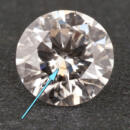
What Are Lab Grown Diamonds?
… is being created. Therefore, a “synthetic diamond” has the same crystal structure and chemical composition as a natural diamond. The same cannot be said of the many imitation or fake gems that are often, incorrectly, described as synthetic … highly advanced technologies that produce crystals with the exact same chemical structure and optical properties as natural diamonds. Now, let’s compare lab grown diamonds to some of the other gems that you might have heard of. Lab Grown …
-
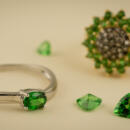
Gem in the Spotlight: Tsavorite Garnet
… Tsavorite has all of the qualities you want in a gemstone: beauty, rarity, intrinsic value, and romance. With its natural, fresh green color in a variety of shades and scintillating brilliance, Tsavorite is one of the most beautiful green …The discovery of Tsavorite in East Africa in the 1960s changed the jewelry world. Here was a gem with the color to rival the most exquisite emeralds and the clarity of the cleanest sapphires, all …
-
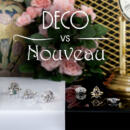
Art Deco vs. Art Nouveau Style Jewelry
… two movements all about, and where did they come from? Origins and Historical Context Originating in the late 19th century (1890 – 1910), Art Nouveau emerged as a rebellion against the academic art of the time. It sought to bring the natural world into artistic design, emphasizing flowing lines, asymmetrical forms, and motifs inspired by plants, flowers, and the human form. Art Nouveau, also referred to as Jugendstil and Stile Liberty among many other monikers, simply means “…